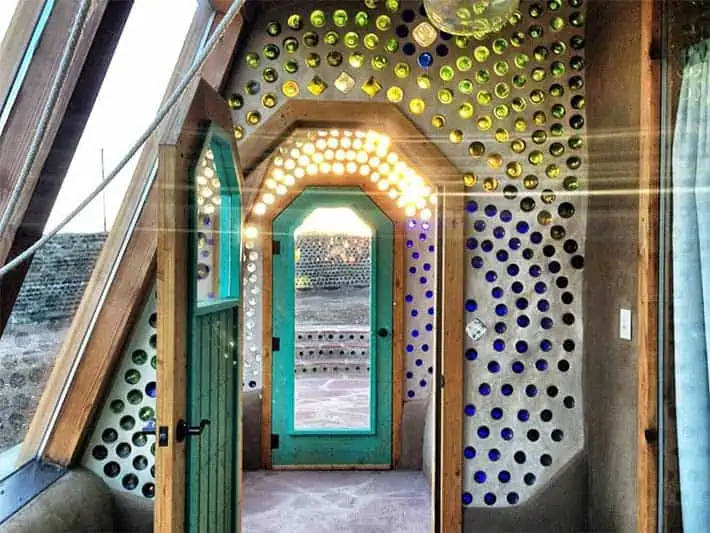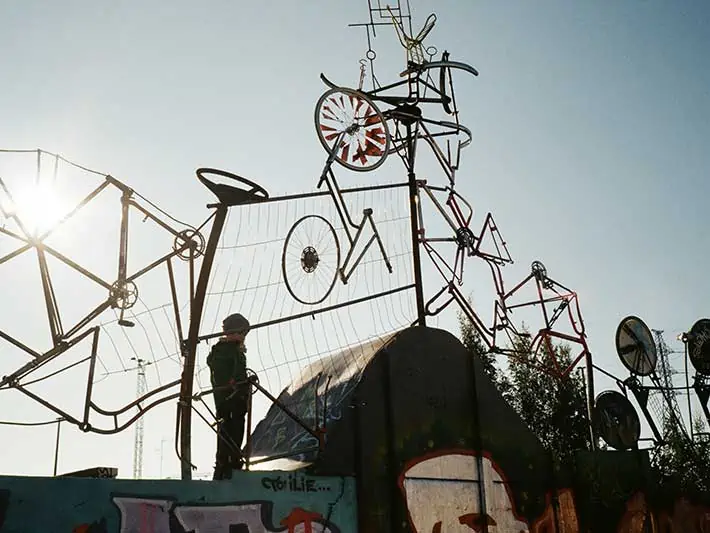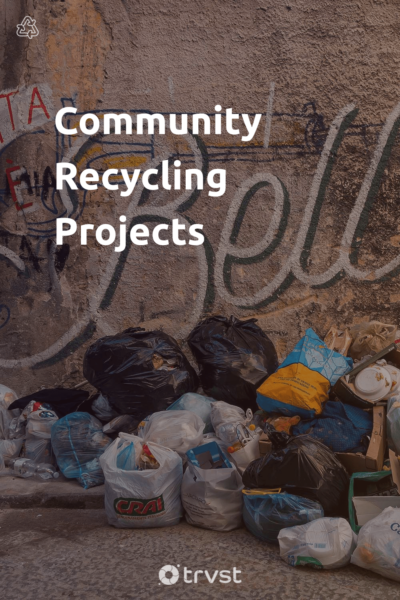Community Recycling Projects
Recycling community waste is a big step on the road to sustainability for your immediate environment. And making use of things that we might otherwise throw away can also help to enhance the lives of locals in a range of ways. There are several creative and imaginative methods in which community recycling projects can help to reduce, reuse and recycle waste materials. These practices don’t have to be personal; we can apply them using group efforts in our different communities.
In this article, we'll explore some of the many exciting community recycling projects that you can consider for where you live. You'll discover some examples of ingenuity that reduce waste and improve the lives of communities around the world.
Recycling Projects For Community Food Production
First of all, let's explore some examples of how communities are recycling consumer waste to enable community food production. We can recycle waste materials to make:
- Greenhouses or other undercover growing areas. (Such as a plastic bottle greenhouse, for example.)
- Seed trays, pots, and containers for food production.
- Cloches/ protective covers for plants.
- Bed edging (for example, edging made from glass bottles, milk bottles, reclaimed timber, etc..)
- Vertical garden structures (made from old wood pallets, recycled plumbing pipes, milk containers, or old textiles, for example).
- Garden tools and implements for gardening.
- Recycled material 'bug hotels', 'bee hotels', nest boxes, etc.
- A bird feeder made from an old plastic bottle or other waste materials.
- A small pond (made using a recycled plastic container, or lined with reclaimed plastic/ rubber sheeting).
- Garden lighting made from reclaimed materials.
- Paths, patio, or decking made from reclaimed materials.
- Garden seating made from waste products or reclaimed materials.
The above are just a few examples of how a community's waste materials can be used to help in areas that are used to grow food for the local people in a sustainable and eco-friendly way.
Other interesting recycling projects involve finding ways to use recycled materials for cooking the food that we grow. For example, communities might be able to:
- Make simple solar ovens from recycled materials.
- Construct hay box ovens from scrap materials.
- Make a fire pit, barbecue or smoker from reclaimed materials.
Again, these are just a few examples of many possible projects that a community group could consider to enhance the lives of their community members.
Community Recycling Construction Projects
Communities are also using recycled materials for a wide range of construction projects. Most exciting, perhaps, are 'Earthship' buildings – the ultimate in recycling construction projects. These projects create entire homes, community buildings or other structures using car tires and other refuse that we would otherwise throw away.

A community might construct:
- New homes.
- A food hub (for the marketing of local produce, or community food serving/ communal dining).
- Recreational buildings, community halls or multi-purpose event spaces.
- Schools or additional school buildings.
- Innovation hubs, workspaces or business incubators.
We can create all of the above – and more – from reclaimed or recycled materials.
Communities are using a range of reclaimed materials to create spaces and buildings to enrich the lives of those who live within them. From plastic bottles to glass bottles, to reclaimed timber, bricks and other construction materials – communities can bring new buildings, fences, walls and other structures into being without buying many if any new materials.
Furnishing/ Kitting Out Community Spaces
Community spaces can and are being entirely kitted out inside using recycled materials too. Upcycling old furniture, and reusing other things that would otherwise be thrown away can save communities money and create beautiful and useful places for communities to use. Recycled materials can be used to:
- Fully furnish the space. (Communities can't just use upcycled furniture, they can also use other waste materials to make new furniture for a space – for example, furniture made from old metal drums or barrels...)
- Make rugs/ curtains/blinds or other soft furnishings from old clothing or textiles.
- Provide new flooring (such as reclaimed timber flooring, for example).
- Improve insulation. (We can make insulation from old jeans, or recycled newspapers, for example.)
- Create a beautiful internal wall covering. Examples include recycling old corks, bottle caps, or scrap timber to make backsplashes and statement walls... though there are plenty of other excellent examples to consider.
Making improvements to community spaces and kitting out and furnishing them with recycled materials means that communities can save money for other exciting projects.
Recycled Art Installations
Creating practical food-producing systems in community gardens and allotment spaces, and constructing and kitting out a range of community buildings is just the beginning. Communities are also using recycled materials to enrich their neighbourhoods in other ways. Recycled art installations can bring communities together, creating visually appealing environments and focal points for community endeavours. Recycled art installations include:
- Garden ornaments and sculptures made from recycled plastic, such as bottle trees, for example.
- Glass bottle art installations, such as a glass bottle wall, fence or 'grotto'.
- 'Follies' made from community trash in a community garden, park or other community areas.
- Recycled bicycle wheel or hub cap art, or art made from other scrap metal.
- Mosaic art made from scrap plastic, bottle lids, broken tiles or crockery etc…

The ways we can reuse materials know no limits. And communities are finding many imaginative ways to make the most of the materials. Those materials that they would otherwise send off to recycling services or thrown away.
Community Food Waste/ Garden Waste Recycling Projects
Many communities have set up recycling projects to use recycled materials to make tangible things for use in food growing or urban agriculture projects, construction or community visual enhancement. But some communities have also moved beyond these ideas to set up other recycling projects in their areas.
For example, some communities have set up systems to recycle food waste and garden waste from all the households in their area. Community composting is one useful and important form of recycling. And communities can make it in a centralized way, either to use on parks and community gardens or to distribute for use in private home gardens around a neighbourhood.
Community Timber Recycling Projects
Some communities have also created centralized depositories for the recycling of timber. The locals gather reclaimed wood in a community space, then make them available to individuals who may wish to use it on their projects.
One example of this is Community Wood Recycling in the UK.
Community Plastic Recycling Projects
There are, as mentioned above, several ways to recycle and reuse common plastic products and packaging for community projects. But there are other ways for communities to introduce plastic recycling projects for even better waste management or even go plastic-free.
Some communities have also come together to collaborate on recycling forms of plastic not commonly recycled in their areas. By creating central spaces for the collection of crisp packets, chocolate wrappers etc., communities can then collect enough of these things to send off for specialist recycling.
Terracycle's crisp packet recycling scheme and other recycling schemes allow communities to gather and send off waste that they cannot ordinarily add to municipal recycling schemes. And depending on where a community is located, there many a range of other recycling schemes to consider.
Community Glass Recycling Projects
As mentioned above, we can use glass bottles in a range of ways to make new things for a community. But communities are also innovating when it comes to glass reuse. Some, for example, are implementing community-wide bottle return schemes, to increase the recycling rate in their area.
Scotland is one of the latest countries to introduce a bottle return scheme. But where national authorities are not introducing such a scheme, communities may still be able to take matters into their own hands.
Community Textiles Recycling Projects
Communities are also finding new and innovative ways to improve the rate of textiles reuse and textile recycling in their areas. For example, some communities have 'swap shops' and jumble sales where people can trade old clothes to keep them in use for as long as possible. Others have even implemented schemes to encourage reuse and recycling – such as setting up work hubs where people can turn old clothes into new ones or make them into a range of new items.
Community Electronic Waste Recycling Projects
Electronics recycling is not usually something that we can achieve at the community level. But by collecting their community's electronic waste and old gadgets centrally, a community can send these off for specialist recycling. Through e-waste recycling schemes, a community can even sometimes make money through doing this. They can then use the proceeds for community projects.
Conclusion
The above are just some of many examples of community recycling projects. Other innovations include gathering old paint to remix and re-sell to members of the community for their home-decoration projects. Or the collection of waste chip fat/ oils for use in the creation of bio-energy for the community.
There are almost endless ways for communities to reduce waste and add value by recycling. We are only limited by our imaginations. If no one is organizing a community recycling project where you live, this should be your cue to take the mantle and start one. Speak to your community leaders on how best to inspire and organize the locals.

